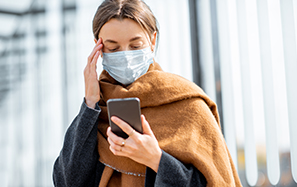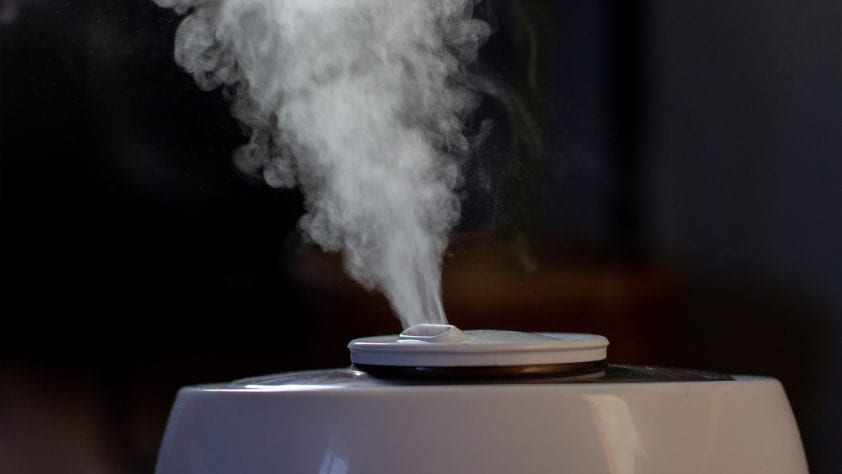How do we handle the positive effect of a higher specific humidity? The following question must be faced quicker than many people think: How long will we keep up the hard measures aimed at decreasing the chance of infection? Meaning, bringing the R0 (the number of people infected by one single individual) back to (almost) […]
Lees volledig artikel: How do we handle the positive effect of a higher specific humidity?
How do we handle the positive effect of a higher specific humidity?
The following question must be faced quicker than many people think: How long will we keep up the hard measures aimed at decreasing the chance of infection? Meaning, bringing the R0 (the number of people infected by one single individual) back to (almost) 0.
Anticipating the magnitude of the consequences following society’s sudden -and by now almost global- stop which we saw in February is an almost impossible task. I think though that the consequences will be huge. I have written another post about that.
Currently we wade in “unchartered territory”. Because normal life has stopped basically everywhere, the economic and social consequences will be disastrous. The negative effects facing national health are also quickly increasing because we prioritize curing COVID-19 virus patients over those with other diseases. But they too require significant medical assistance. Furthermore, being locked in your own home, lacking social contacts and facing serious worries over your income (and possible total loss of it) will undoubtedly impact peoples mental and physical health as well.
Slow down
Of course, we all hope the virus has disappeared within the next couple of weeks. However, the chance of that actually happening is, even when we take strong measures, close to none. At best will we slow down the spreading-speed. This will increase the possibility to find a vaccin or cure though, but still, a total disappearance of the virus is not realistic in the near future.
So, there will come a moment (and I think this will be rather soon) where world leaders must decide whether they will accept the risk of further infection in order to prevent the cure from being worse than the cause, or not.
It’s a horrible dilemma. Especially because it will have huge consequences for those who will fall ill or die from the COVID-virus because of their decisions. We can also expect the public to become rather divided about choices like that.
The data and conclusions about specific humidity can play an important role in the decision about gradually breaking down the current measures. Look at the USA, for example. The climatic circumstances in New York are very different from those in the larger part of California. Looking at the population structure, New York shows to be line with the Italian city of Bergamo (or even worse). California, home to 40 million inhabitants, now faces 65 deaths. The state of New York now has, with only half of California’s population already 385 deaths. Plus, the first infection was recorded way earlier in California than in New York.
Population density
A possible explanation for that difference may be the difference in population density between New York City and Los Angeles. But from the patterns we see elsewhere (for example the difference between Napels and Rome and the development in Lombardy) we can see that California has the advantage of a higher specific humidity than New York.
Nevertheless, California’s governor has taken very strong measures, almost the same as in New York.
The negative economic and social effects (especially when things don’t subside after three weeks) will be immense. And all this while the measures taken because of that higher selective humidity were/are less required than in New York.
Another problem is that the effects from these measures (and from more favorable weather) only become visible after 2 weeks.
New York had up until a few days ago very bad weather conditions but now things have improved a little bit. The weather forecast shows that until April 1st we can expect better conditions with higher humidity-values. Then, from April 1st to April 5th, we face another drop and see very low humidity-values. After this things will improve, a lot.
Tempo of infection
Given the R0 (tempo of infection) is lower because of high humidity, a total lockdown in California seems unnecessary. Hygiene and rules like social distancing, prohibiting large social gathering and keeping schools closed a little longer should be enough to sufficiently slow down the virus’ spreading rate.
New York could start with a gradual breakdown of its measures after April 5th because of the weather predictions. However, there is a high probability that the city’s death rate will still increase rapidly -due to the two week delay- before we see the effect of the measures.
So, as from mid-April will New Yorkers see real improvements. Before that, Bergamo-like scenarios are not unlikely. California won’t experience such scenarios.
To prevent the cure being worse than the cause, and because we need some form of exit-strategy, I am strongly in favor of adapting policy and measures to the specific humidity. Unfortunately, in the Netherlands we face a rather unfavorable weather forecast in the coming two weeks.
It is that very time that we could use to find the exact relation between specific humidity and the R0 (better than I have done so far by compiling scientific literature and data analyses). We should also use this time to try to understand why that relation exists.
Importance is underestimated
I’ve already seen that in America, at the University of Utah, a similar assignment has been given. However, I fear that its importance will be highly underestimated. I strongly advocate that the Netherlands show the utmost urgency and use enough money to investigate how the COVID-19 virus reacts to the amount of moisture in the air and what causes it. (Taking into account the two explanations I already covered in this blog).
Out of al the investments made by the government to prevent the effect of the outbreak, the above might very well be the best one.
Lastly, some personal advice. We (unfortunately) cannot change the weather. I have done some (small scale) research on food in supermarkets. Note that these supermarkets often have a high humidity because of cooling machines (sucking moisture from the closets) and nebulizers.
Temperatures average around 18 degrees Celsius with a relative humidity. I’m under the impression that a higher humidity in small and closed off spaces works like an extra defense layer against the spread of the virus when many people are in such a space. (think of shops, offices, hospitals). This experimental American research from 2013 shows that for a normal influenza virus, this is definitely the case.
Fight Covid-19
By realizing a temperature of 20 degrees and a humidity of 50% we could possibly (significantly?) lower the chance of getting infected.
The government should investigate if this proves a right measure to fight COVID-19 (as I have determined on a small scale). Subsequently they should -to protect everyone in spaces still holding many people- ensure the humidity is brought to the required (and safer) level.
These 6 blogs form a coherent whole:
How great is the danger of the COVID-19 virus really?
The influence of humidity on the spread of the COVID-19 virus
What is happening in the (sub)tropical areas with the spread of COVID-19?
How do we respond to the positive effect of a higher specific humidity? (This blog)
What if the diffusion rate of COVID-19 has dropped to -near-zero?
The enormous economic and social consequences of this pandemic
You have just read: How do we handle the positive effect of a higher specific humidity?








